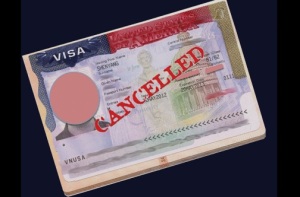There are many pitfalls for those in F-1 status. Some of which I have talked about before. I want to discuss two potential pitfalls that have been in the news recently: The creation of a fake University by ICE to ensnare F-1 violators; and, Day 1 CPT.
First, several years ago (it actually started under the Obama administration), ICE began setting up fake Universities. Because they were a Government Organization, they were able to get fake certifications and able to have them added to the SEVIS database and began enrolling students. Students who enrolled quickly realized there were no real classes, no real campus, no teacher, etc. While it was impossible to realize this before enrolling, ICE moved to deport all students who attended the University, even those who, after realizing that it was fake, transferred out within a short period of time. While it is hard to defend those who did not look into the university’s workings or question the fact that there were no courses, etc., and who were subsequently deported for violating student status, it is different for those who transferred out in a relatively short period of time. Some students contacted the administration multiple times trying to get answers about when and where classes would meet, etc. Then, they took the time to transfer elsewhere, at great expense to themselves. Yet, ICE did not care if you were diligent and tried to figure it out, they tried to deport ALL students who attended the fake school, no matter what. ICE argues that they should have known that it was fraudulent. Clearly, it would be best if you made sure to look into any University you are going to attend – make sure there is a full curriculum listed on the website, with courses and teachers listed. Make sure all accreditations are accurate and legitimate. Do not attend a University that is being heavily promoted by recruiters (this is how ICE could get most students to attend). In closing, be careful. For more information on this, see this article.
The second issue is schools that offer Day 1 Curricular Practical Training. Curricular Practical Training is a way for students to get experience for a legitimate school program that requires such work as an integral part of the Curriculum. There are plenty of such specialized schools. However, many schools also allow students to use CPT from Day 1, even though it is not really an integral part of the program. Instead, it is a way for the schools to make money because there are so many F-1 students who applied for H-1Bs and were not selected but still want to work for their employers. These schools allow students to enroll in programs related to their employment and past degree and then work in CPT part-time for their previous employer from Day 1. Such use of CPT is NOT what it is meant for. The problem is that USCIS has not been clear in its rules. While it clearly states that CPT must be an integral part of the program, that is not really defined. In addition, USCIS does not attach such cases by saying that the CPT was not an integral part of the F-1’s program. Instead, USCIS tries to re-write its rules. Currently, the way the CPT and OPT rules are written is that an F-1 is allowed up to 1 year of Practical Training. The rules then go on to say that if you work 12 months of full-time CPT, then you are not eligible for OPT, which clearly implies that as long as your CPT is part-time OR you work less than 12 months of full-time CPT, then you will get your OPT time, and that is how USCIS usually reads the rule. However, in select cases, USCIS will revise this rule and look at the 1 year of Practical Training and say that this covers both CPT and OPT, and therefore the student violated their status. While this can be challenged in Court, that is a time consuming and expensive process. So for most students caught up in this crusade of USCIS’, they are left with having a change of status or adjustment of status application denied for violating their status.
F-1 students need to be vigilant in deciding what school and what programs to use to ensure that they are not, rightly or wrongly, determined to be violating their status by USCIS or ICE. Be careful.
Please remember, as always, this blog does not offer legal advice. If you need legal advice, consult with a lawyer instead of a blog. Thank you.





